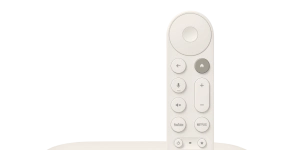Thread 1.4 Released: Finally the One Home Network to Rule Them All?
Thread 1.4 simplifies smart home networking by unifying devices into a single, more reliable mesh network, addressing past setup issues and enhancing overall interoperability and performance.

Please note: This page may contain affiliate links. Read our ethics policy
The adoption of Thread in the smart home industry has been rocky, mostly due to its confusing setup process and the creation of multiple thread networks within the same home. Thread 1.4 addresses these issues and brings further improvements to make it easier than ever to utilize devices which connect via Thread - our favorite smart home networking protocol.

Understanding Thread and Its Role in IoT
Thread is a low-power wireless networking protocol designed to support IoT devices. It uses mesh networking, which allows devices to communicate directly with each other without the need for a central hub. This makes it particularly useful in smart home and building applications, where devices may be spread across a wide area and need to work together reliably.
Thread is built on open IP standards, which means it is compatible with a variety of other technologies. For example, Matter, a unified standard for smart home devices, relies on Thread to enable interoperability between devices from different manufacturers. This ability to work across ecosystems makes Thread a key player in the future of IoT.
Read our explainer: How does Thread fit into Matter?
The Significance of Thread 1.4
With the introduction of Thread 1.4, several new features and improvements are now available. These changes are designed to enhance the user experience by making IoT networks more reliable, secure, and easier to manage.
- One Unified Mesh Network: One of the most significant improvements in Thread 1.4 is its ability to simplify mesh network management. Previously, adding devices from different manufacturers or ecosystems to a Thread network could result in multiple separate networks, each with its own limitations. Thread 1.4 standardizes how devices recognize and trust each other, allowing them to join a single unified mesh network, regardless of their origin. This not only makes network setup easier but also extends the range and reliability of the network.
- Cloud Connectivity: Thread 1.4 also introduces a defined, standardized path for Border Routers to connect to the internet. Border Routers act as gateways between Thread devices and other networks, such as Wi-Fi or Ethernet. With this new feature, manufacturers can offer more dynamic functionality, such as smart devices that respond to real-time weather updates. Additionally, remote control and software updates become more reliable, as devices can now maintain a stable connection to the cloud, whether the user is at home or away.
- Extended Range and Reliability: Thread 1.4 brings improvements to the network's range and robustness by allowing Border Routers to use both Wi-Fi and Ethernet to extend the mesh network. This expanded infrastructure means that devices located in hard-to-reach areas, such as the far corners of a home or even outside, can still be part of the network. The enhanced reliability ensures that devices stay connected and perform optimally, even in challenging environments.
- Simplified Onboarding and Troubleshooting: One of the most practical improvements for developers, installers, and end-users is the new tools for testing and troubleshooting. Thread 1.4 standardizes methods for providing network configuration and status data, making it easier to monitor and diagnose network performance issues. This is particularly useful in commercial settings, where maintaining a robust and scalable network is crucial. For professional installers, these enhancements reduce installation time and improve the overall efficiency of deploying and maintaining Thread networks.
- Secure Wireless Onboarding: Another key feature of Thread 1.4 is its support for commissioning devices wirelessly, even in hard-to-reach places like ceilings or behind walls. Instead of requiring physical interaction with the device, such as scanning a QR code, devices can now be onboarded securely over a wireless connection using Transport Layer Security (TLS). This is especially beneficial in professional installations where devices may already be installed in challenging locations.
- General Enhancements: Thread 1.4 also includes several maintenance updates aimed at improving overall network performance and reliability. These updates ensure that Thread-enabled devices continue to function smoothly, even as networks grow in size and complexity.
The Role of Thread in Matter Ecosystems
Thread’s role in the Matter ecosystem cannot be overstated. Matter, which is designed to unify smart home devices under a common standard, relies on Thread for its mesh networking capabilities. This means that devices from different manufacturers, whether they are smart lights, thermostats, or security systems, can work together seamlessly within the same network.
With the release of Thread 1.4, Matter-enabled devices can be added to existing Thread networks without compatibility issues. This is a significant step toward the vision of a truly interoperable smart home, where users no longer need to worry about whether their devices will work together. Whether a device comes from Apple, Google, or another manufacturer, it can be part of the same network, controlled by the same apps, and integrated into the same automation routines.
The updates to Thread 1.4 also make it easier for manufacturers to implement Matter support in their devices. By simplifying network setup and providing more robust cloud connectivity, Thread 1.4 reduces the technical barriers that manufacturers face when developing Matter-compatible devices.
Benefits for Developers and Installers
For product developers and professional installers, the Thread 1.4 specification brings several key benefits. These enhancements not only make it easier to design and deploy Thread-enabled devices but also improve the overall user experience.
- For Developers: The ability to offer a single mesh network that works across ecosystems provides more opportunities for innovation. Developers can create devices that offer better performance and more features without needing to worry about compatibility issues. The new cloud connectivity features also enable more dynamic functionality, such as devices that can respond to real-time data or receive software updates remotely.
- For Installers: Thread 1.4 makes the installation process easier and more efficient. With simplified onboarding and standardized testing tools, installers can reduce the time spent setting up devices and troubleshooting network issues. The improved range and reliability of Thread networks also mean that installers can place devices in more locations without worrying about connectivity problems.
The Future of Smart Homes and Buildings
The release of Thread 1.4 is an important milestone in the development of smart home and building technologies. As more devices adopt Thread, and as Matter continues to grow in popularity, the vision of a fully interoperable, reliable, and secure IoT ecosystem becomes more attainable.
For consumers, this means that smart homes will become easier to set up and manage, with devices from different manufacturers working together seamlessly. The improved reliability and performance of Thread 1.4 will also lead to fewer connectivity issues, making smart homes more dependable.
In commercial settings, Thread 1.4's enhancements will make it easier to deploy and maintain large-scale IoT networks. The ability to securely onboard devices in hard-to-reach locations and the standardized troubleshooting tools will improve network performance and reduce maintenance costs.
About the Author

David Drager
Executive Editor
Dave has been working in the technology space since 2002, and has been passionate about smart home ever since. Formerly the CTO of XDA Developers, he has also written for publications like MakeUseOf and Lifehacker. Dave also has a Bachelors degree in Telecommunications, a Master's in Computer Science, and is a CISSP. He lives outside the Philadelphia area and enjoys spending time with his family, travelling, DIY and videos games (in that order).

Google TV Streamer (4K)
The Google TV Streamer is a dual-purpose device with Matter compatibility and a built-in Thread border router, enhancing smart home connectivity and 4K streaming.